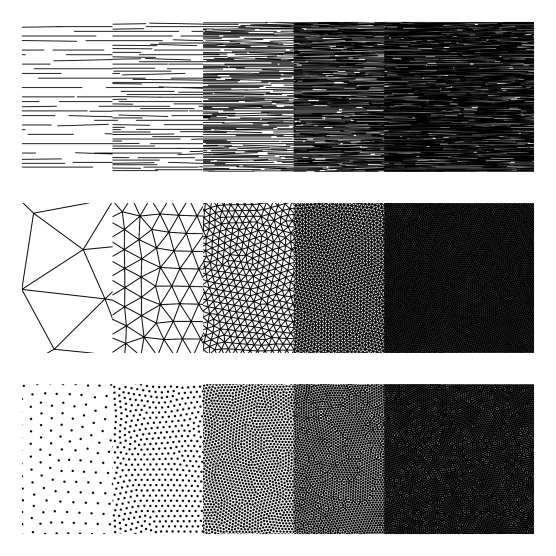Perceptually Uniform Construction of Illustrative Textures
Anna Sterzik, Monique Meuschke, Douglas Cunningham, Kai Lawonn
DOI: 10.1109/TVCG.2023.3326574
Room: 105
2023-10-26T03:48:00ZGMT-0600Change your timezone on the schedule page
2023-10-26T03:48:00Z

Fast forward
Full Video
Keywords
Illustrative Visualization, Perceptual Evaluation, Hatching, Stippling.
Abstract
Illustrative textures, such as stippling or hatching, were predominantly used as an alternative to conventional Phong rendering. Recently, the potential of encoding information on surfaces or maps using different densities has also been recognized. This has the significant advantage that additional color can be used as another visual channel and the illustrative textures can then be overlaid. Effectively, it is thus possible to display multiple information, such as two different scalar fields on surfaces simultaneously. In previous work, these textures were manually generated and the choice of density was unempirically determined. Here, we first want to determine and understand the perceptual space of illustrative textures. We chose a succession of simplices with increasing dimensions as primitives for our textures: Dots, lines, and triangles. Thus, we explore the texture types of stippling, hatching, and triangles. We create a range of textures by sampling the density space uniformly. Then, we conduct three perceptual studies in which the participants performed pairwise comparisons for each texture type. We use multidimensional scaling (MDS) to analyze the perceptual spaces per category. The perception of stippling and triangles seems relatively similar. Both are adequately described by a 1D manifold in 2D space. The perceptual space of hatching consists of two main clusters: Crosshatched textures, and textures with only one hatching direction. However, the perception of hatching textures with only one hatching direction is similar to the perception of stippling and triangles. Based on our findings, we construct perceptually uniform illustrative textures. Afterwards, we provide concrete application examples for the constructed textures.